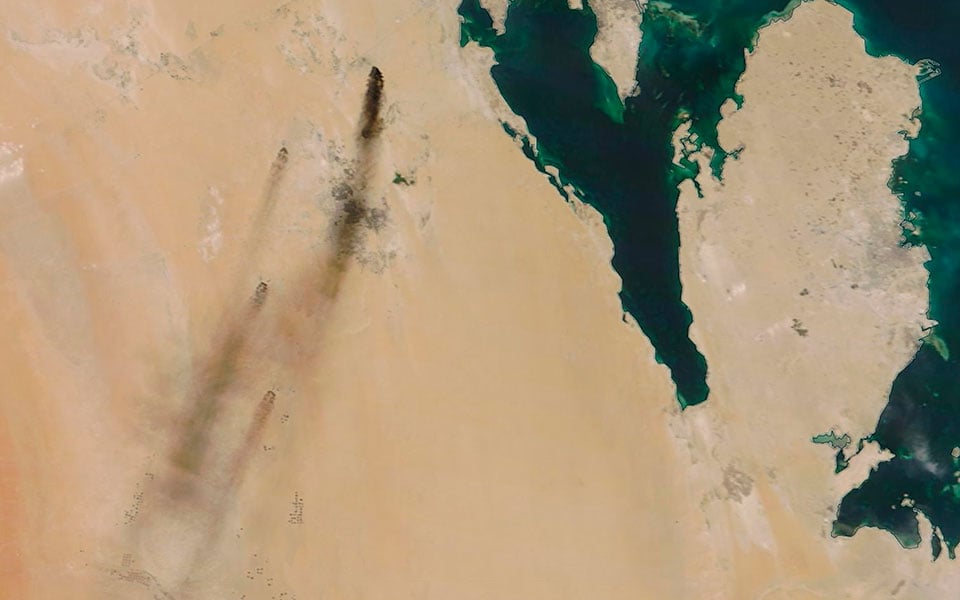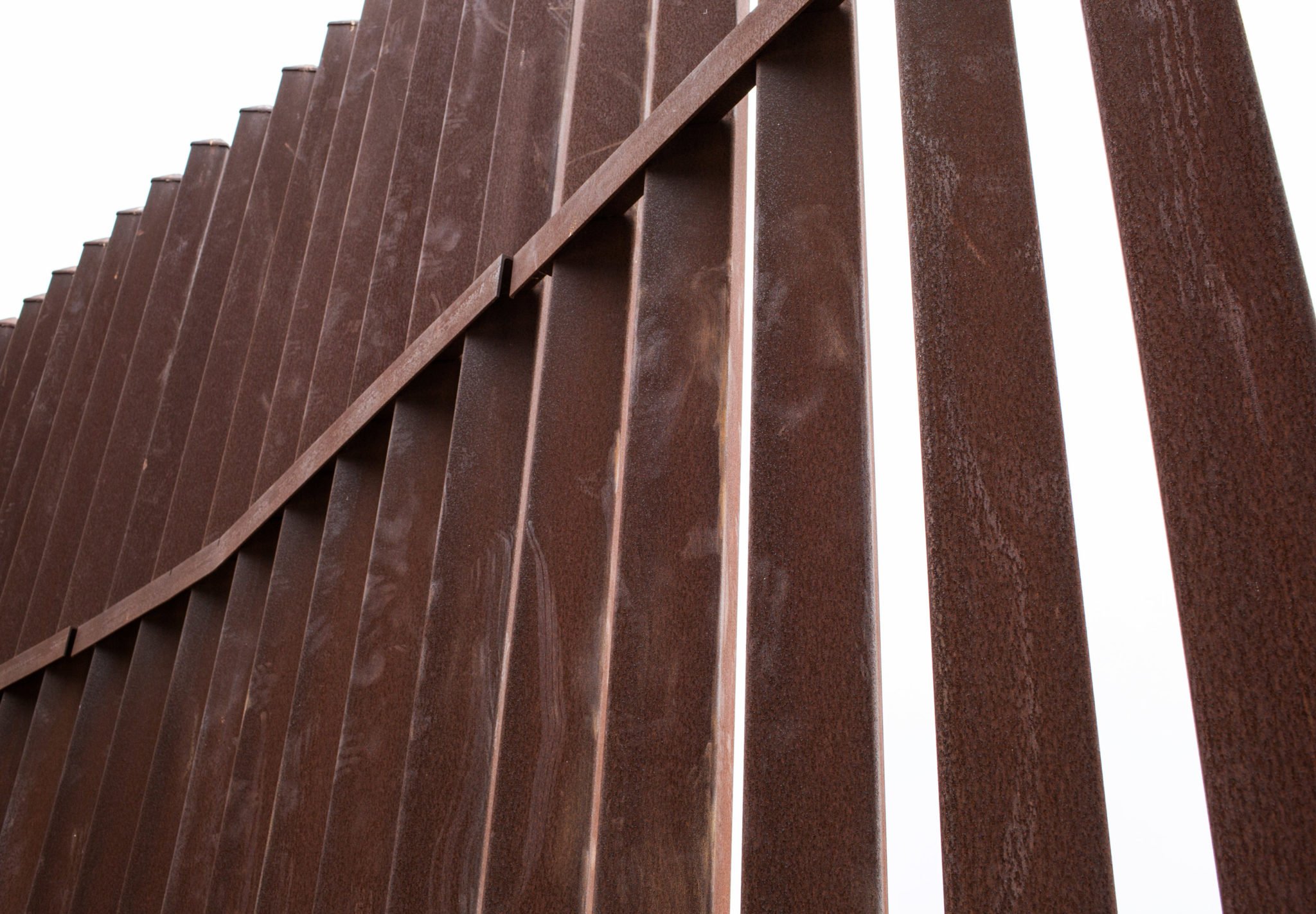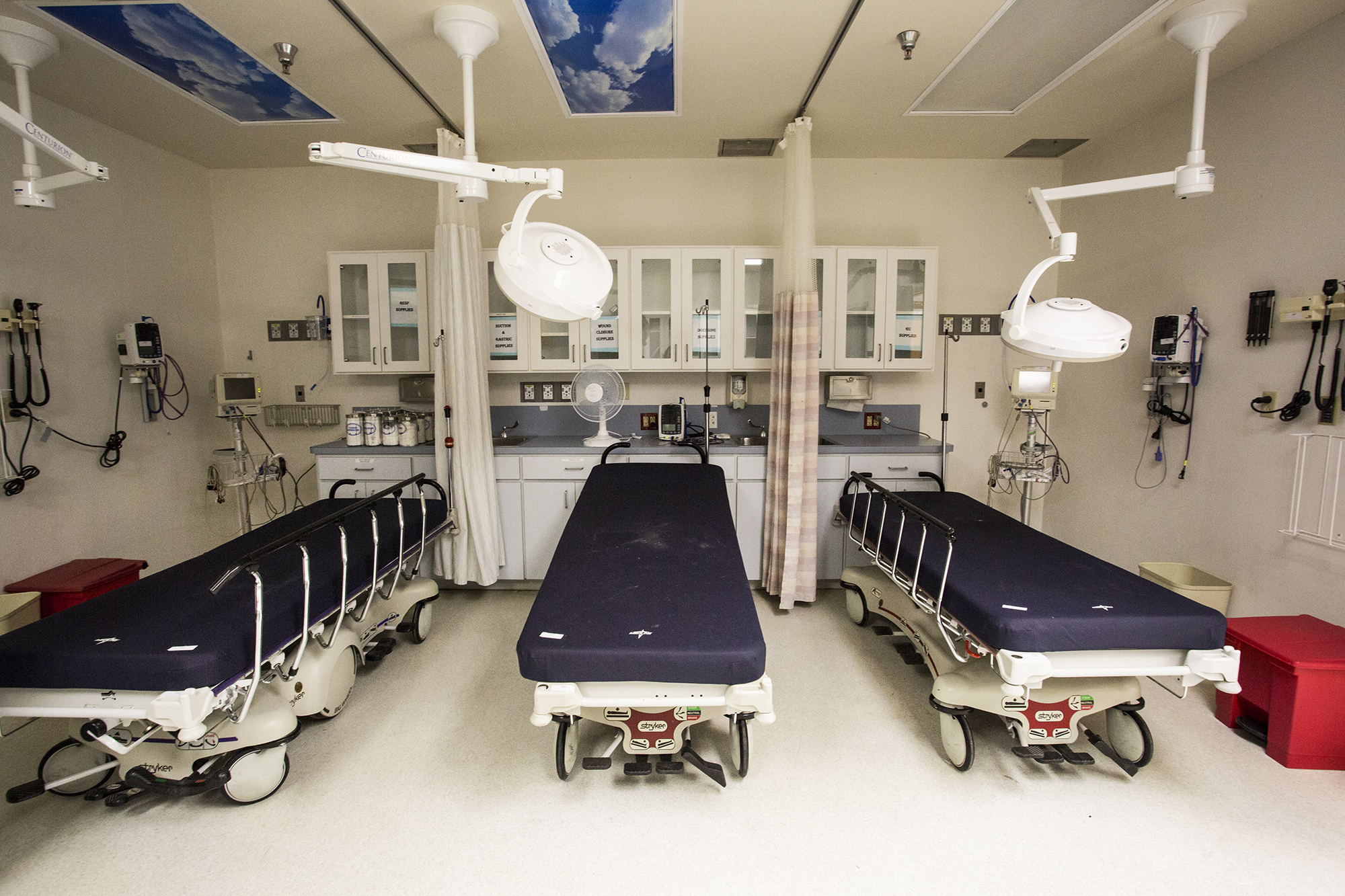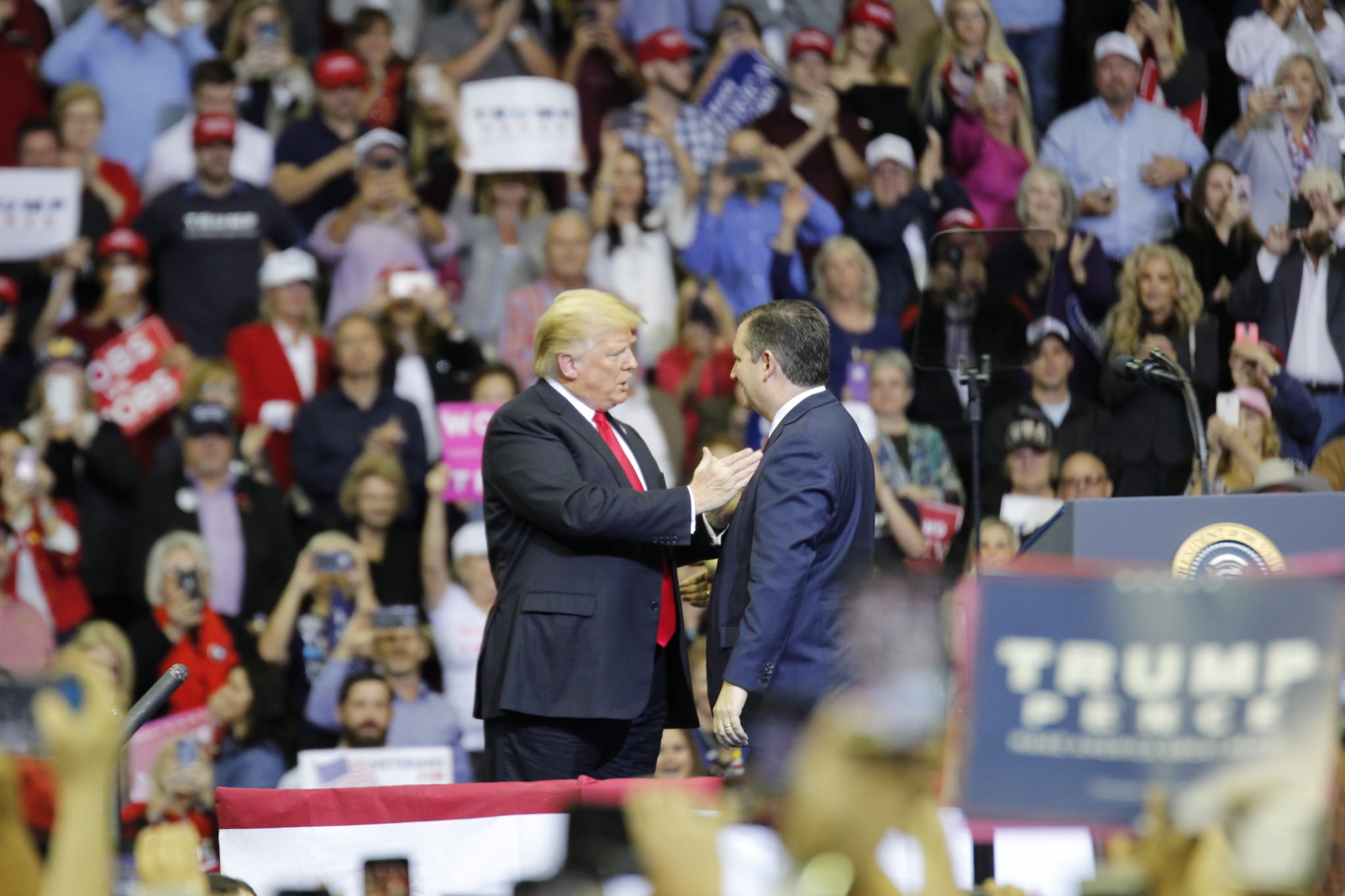
Why Trump Was Tweeting About Texas After Drone Strikes on a Saudi Arabian Oil Facility
Energy expert Jim Krane explains the politics behind the president’s desire to release American oil reserves.

Above: Fires following a drone attack on two major oil installations in eastern Saudi Arabia, claimed by Yemen's Houthi rebels. The drones attacked the world's largest oil processing facility in Saudi Arabia and a major oilfield operated by Saudi Aramco early Saturday, sparking a huge fire at a processor crucial to global energy supplies.
What do geopolitics in the Middle East have to do with Texas? When it comes to oil prices and production, everything. A September 14 drone strike on two major oil processing plants in the city of Abqaiq, Saudi Arabia, led to fears that global oil prices could go haywire. It could take months for the facilities, operated by Saudi Aramco, to regain full operating capacity, and oil prices are already climbing.
That prompted President Donald Trump to declare on Twitter that he would authorize the release of oil reserves from the United States’ Strategic Petroleum Reserve (SPR), half of which is located along the Texas Gulf Coast. More than 600 million barrels of oil are stored in salt dome caverns managed by the Department of Energy. (When the SPR is at its full capacity of 713 million barrels, it contains enough oil to single-handedly fuel the country for about five weeks.)
Presidents usually time releases from the SPR for when oil supplies are low and prices are high. It’s a step that’s been taken only three times before: in 1991, during the United States’ first invasion of Iraq; in 2005, after Hurricane Katrina damaged oil-and-gas facilities in the Gulf of Mexico; and in 2011, after NATO-led military interventions in Libya disrupted global oil supplies.
“Trump might want the quicker release of crude from the SPR, than maybe Obama or somebody else, because one of his key themes is cheap oil: ‘Let’s keep partying like it’s 1999.’”
The quest for cheap oil has long been a driving force behind America’s foreign policies and military interventions. But it seems unlikely that the weekend drone strikes—which may or may not have been carried out by Yemenis, who are backed by Iran, against the Saudis, who are backed by the United States—will cause a major oil shortage. On Monday, Secretary of Energy and former Texas Governor Rick Perry said that tapping into the reserves could be “premature.”
Trump also tweeted that he would “expedite approvals of the oil pipelines currently in the permitting process in Texas and various other States,” though it’s unlikely that he has the authority to single-handedly do so.
To make sense of the tweets—and the geopolitics of oil prices—the Observer spoke with Jim Krane, an energy studies fellow at Rice University, and a former journalist with the Associated Press who covered the Middle East through the early 2000s.
Texas Observer: Is the situation in Saudi Arabia serious enough to be talking about releasing oil from the reserves?
Jim Krane: This is actually the second time that Abqaiq has been attacked. We’ve known about this chokepoint for a while in the Gulf. In 2006 there was an attack on the facility by Al Qaeda. It didn’t shut down processing, but a few people died. It caused a spike in oil prices.
In the U.S., the Strategic Petroleum Reserve is a pretty good insurance policy that would protect us from all but a really major disruption. But there’s a lot of oil in storage in the U.S. outside the SPR. There’s a lot of oil at sea in tankers; there’s oil all over the place. So you have to keep this in perspective.
From what I know now, it’s a little too early to say, but I think it does justify broaching the subject. We can tap the SPR if we need to. As the president or the chief of energy policy, you want to at least give folks the notion that we have a fallback, and we have oil in storage, so if we need to use it we will.
When is tapping the SPR justified? Is there a magic number?
Usually, it’s when there’s a big shortage and there is a big price spike. That usually happens when the markets are tight, and they are anything but tight right now. My guess is, we probably won’t need it. There’s spare capacity, because OPEC has been cutting production.
How is all this impacting the Texas oil and gas industry?
It definitely impacts us. We are a big oil producer, but we’re not self-sufficient—the U.S. is still an importer of oil. And Saudi [Aramco] owns the largest refinery in Texas—in the United States, in fact—in Port Arthur. That refinery refines 600,000 barrels a day, mainly of Saudi crude. Now, it could source elsewhere if they couldn’t get Saudi crude. So we’re not directly vulnerable to a shortage of crude supply in the U.S. Where we are more vulnerable is in the price.
Everything in the oil market is 100 percent interrelated. So after an explosion halfway across the world in Saudi Arabia, the guy at your gas station will climb the ladder and change the price signs. And research has also shown that prices at the pump in the U.S. react really quickly to geopolitical events, when they’re going up. But when they come down, it’s a lot slower.
There’s a ton of politics in this. One of Trump’s mantras has been that the U.S. is energy dominant and that he wants oil prices low, and he wants Americans to consume as much as they want. But we’ve got a constraint on oil supplies that will push up oil prices. So Trump might want the quicker release of crude from the SPR, than maybe Obama or somebody else, because one of his key themes is cheap oil: “Let’s keep partying like it’s 1999.”
This story is part of Covering Climate Now, a global collaboration of more than 220 news outlets to strengthen coverage of the climate story.
Read more from the Observer:
-
Climate Change Will Make Harmful Algae Blooms in Texas Waterways More Common: Blue-green algae exists in almost all of the state’s waterways. Once it starts to bloom, it’s hard to get rid of it.
-
Bridge to Nowhere: Where the Texas Gulf Coast meets Mexico, a trio of fossil fuel companies is planning an industrial complex the likes of which Texas’ Rio Grande Valley has never seen.
-
Rent By Another Name: As rent continues to rise across the state, an increasing number of Texas tenants are also saddled with mandatory fees for everything from doorstep trash collection to cable television.


